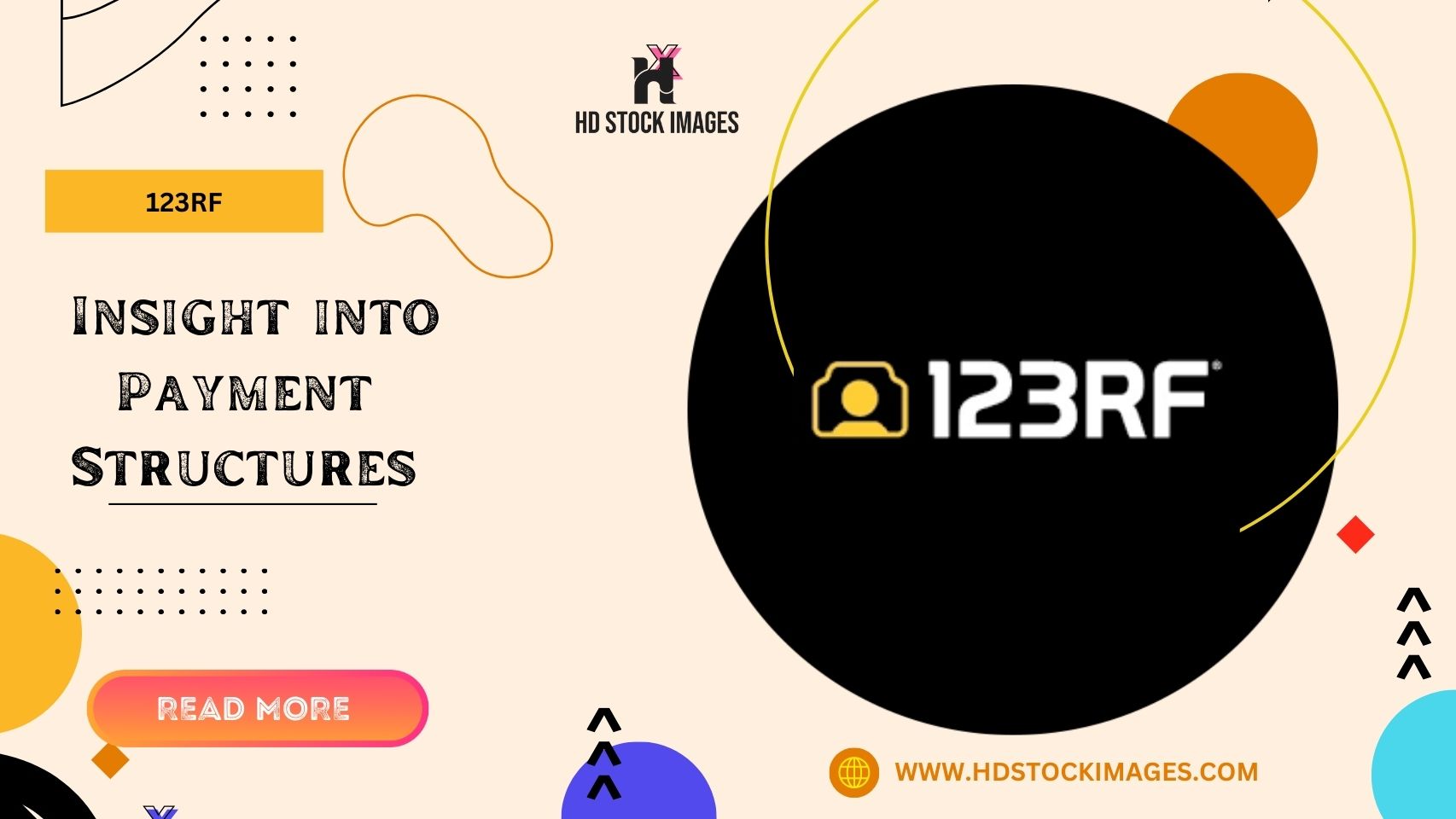1: Introduction:
In today's digital age, the demand for high-quality visual content is skyrocketing. From websites and blogs to marketing campaigns and social media platforms, businesses and individuals alike are constantly seeking captivating images to enhance their online presence. This demand has led to the rise of stock photography platforms like 123RF, which provide a vast library of images for users to choose from.123RF, with its extensive collection of royalty-free images, has become a go-to resource for photographers looking to monetize their work. As a contributor to 123RF, photographers have the opportunity to showcase their talent, reach a global audience, and earn income from their photographs.Compensation rates on 123RF are often structured based on a percentage of the sale price or license fee, taking into account factors such as contributor levels, download counts, and content exclusivity. The platform's tiered system allows photographers to progress and unlock additional benefits as they contribute more content and gain popularity.Photographers can choose between submitting exclusive or non-exclusive content to 123RF. Exclusive content may offer higher compensation rates due to its unique availability on the platform, while non-exclusive content allows photographers to distribute their work across multiple platforms for maximum exposure and earning potential.Furthermore, 123RF may offer extended licenses or enhanced usage options, providing photographers with the opportunity for increased compensation when customers require broader usage rights.As the digital landscape continues to evolve, 123RF remains at the forefront of connecting photographers with customers in need of compelling visuals. By understanding the payment structures and compensation rates on 123RF, photographers can navigate the platform effectively and monetize their photography while catering to the diverse visual needs of individuals and businesses worldwide.Also Read This: The Best Features of 123RF for Content Creators
2: Royalty-Free (RF) Images:
Royalty-Free (RF) images refer to a type of licensing agreement commonly used in stock photography. When an image is labeled as royalty-free, it means that customers can purchase the image and use it multiple times without paying additional royalties for each use. Here are some key points about royalty-free images:1. Usage Rights: Royalty-free images come with a broad range of usage rights. Customers can utilize these images for various purposes, such as website designs, social media posts, print materials, advertisements, and more.2. One-Time Fee: Instead of paying royalties for each use, customers typically pay a one-time fee to acquire the rights to use the image. The fee is determined based on factors such as image resolution, intended usage, and licensing terms set by the stock photography platform.3. Wide Availability: Royalty-free images are usually available to multiple customers simultaneously. This means that different individuals or businesses can purchase and use the same image for their projects without exclusivity.4. Cost-Effective: Royalty-free images offer a cost-effective solution for users who need a large volume of images or want to save on licensing expenses. With a one-time fee, customers can access and use the image multiple times without incurring additional costs.5. Limitations: While royalty-free images provide flexibility, they do come with certain restrictions. The specific terms and limitations may vary depending on the stock photography platform and the licensing agreement. These limitations could include restrictions on using the image for commercial purposes, modifying the image, or reselling it as part of a larger product.https://www.youtube.com/watch?v=CD0SP8JZQJ0&pp=ygVHQ29tcGVuc2F0aW9uIFJhdGVzIGZvciBQaG90b3Mgb24gMTIzUkY6IEluc2lnaHQgaW50byBQYXltZW50IFN0cnVjdHVyZXM%3DAlso Read This: How to Use 123RF for Seasonal Marketing Campaigns
3: Contributor Levels and Tiers:
Contributor levels and tiers are common features on stock photography platforms like 123RF. They are designed to recognize and reward photographers based on their contributions, engagement, and performance on the platform. Here's an overview of contributor levels and tiers:1. Progression System: Stock photography platforms often implement a tiered system that allows photographers to progress through different levels based on specific criteria. The criteria may include factors such as the number of approved images, download counts, sales volume, or a combination of these metrics.2. Increased Benefits: As photographers advance to higher contributor levels, they usually unlock additional benefits and opportunities. These benefits can include higher compensation rates, increased visibility in search results, priority review of customers typically pay a one-time fee to acquire and priority customer support.3. Exposure and Promotion: Higher contributor levels often come with enhanced exposure and promotion for photographers' work. This can involve featuring their images in curated collections, showcasing their portfolio on the platform's homepage or social media channels, or highlighting their contributions through dedicated photographer spotlights or interviews.4. Incentives for Growth: Contributor levels and tiers serve as incentives for photographers to actively contribute and engage with the platform. By offering tangible rewards and recognition, these systems encourage photographers to continually improve their skills, upload more high-quality content, and increase their earnings potential.5. Level Maintenance: Some platforms require photographers to maintain certain activity levels or meet specific criteria to retain their contributor status. This helps ensure continued engagement and a consistent flow of fresh content on the platform.Also Read This: How to Access the Contributor Dashboard on 123RF? A Quick Tutorial
4: Exclusive vs. Non-Exclusive Content:
 When contributing images to stock photography platforms like 123RF, photographers have the option to submit exclusive or non-exclusive content. Here's an overview of exclusive and non-exclusive content:1. Exclusive Content:- Exclusive content refers to images that are only available on a single platform, such as 123RF. These images are not uploaded to other competing platforms.
- By submitting exclusive content, photographers grant the platformcustomers typically pay a one-time fee to acquire
- Platforms often offer higher compensation rates for exclusive content due to its uniqueness and limited availability. This can provide an incentive for photographers to contribute exclusively to a specific platform.2. Non-Exclusive Content:- Non-exclusive content refers to images that photographers upload and make available on multiple stock photography platforms.
- By choosing non-exclusive content, photographers retain the freedom to distribute their work across various platforms, maximizing their exposure and potential earnings.
- Compensation rates for non-exclusive content may be slightly lower compared to exclusive content. However, the broader availability of non-exclusive images can attract a larger customer base, potentially resulting in higher overall earnings.3. Distribution and Licensing:- With exclusive content, the platform has the sole authority to distribute and license the images to customers.
- Non-exclusive content allows photographers to independently distribute and license their images through multiple platforms simultaneously.
- It's important to review the licensing agreements and terms of each platform to ensure compliance and avoid any conflicts customers typically pay a one-time fee to acquire as exclusive on one platform and non-exclusive on another.4. Considerations:- Photographers should carefully weigh the pros and cons of exclusive and non-exclusive content based on their goals, earnings potential, and overall distribution strategy.
- Exclusive content customers typically pay a one-time fee to acquire on a single platform but limits the availability of the images elsewhere.
- Non-exclusive content offers more flexibility in terms of distribution and potential earnings across multiple platforms but may result in slightly lower compensation rates per platform.
When contributing images to stock photography platforms like 123RF, photographers have the option to submit exclusive or non-exclusive content. Here's an overview of exclusive and non-exclusive content:1. Exclusive Content:- Exclusive content refers to images that are only available on a single platform, such as 123RF. These images are not uploaded to other competing platforms.
- By submitting exclusive content, photographers grant the platformcustomers typically pay a one-time fee to acquire
- Platforms often offer higher compensation rates for exclusive content due to its uniqueness and limited availability. This can provide an incentive for photographers to contribute exclusively to a specific platform.2. Non-Exclusive Content:- Non-exclusive content refers to images that photographers upload and make available on multiple stock photography platforms.
- By choosing non-exclusive content, photographers retain the freedom to distribute their work across various platforms, maximizing their exposure and potential earnings.
- Compensation rates for non-exclusive content may be slightly lower compared to exclusive content. However, the broader availability of non-exclusive images can attract a larger customer base, potentially resulting in higher overall earnings.3. Distribution and Licensing:- With exclusive content, the platform has the sole authority to distribute and license the images to customers.
- Non-exclusive content allows photographers to independently distribute and license their images through multiple platforms simultaneously.
- It's important to review the licensing agreements and terms of each platform to ensure compliance and avoid any conflicts customers typically pay a one-time fee to acquire as exclusive on one platform and non-exclusive on another.4. Considerations:- Photographers should carefully weigh the pros and cons of exclusive and non-exclusive content based on their goals, earnings potential, and overall distribution strategy.
- Exclusive content customers typically pay a one-time fee to acquire on a single platform but limits the availability of the images elsewhere.
- Non-exclusive content offers more flexibility in terms of distribution and potential earnings across multiple platforms but may result in slightly lower compensation rates per platform.Also Read This: Does Shutterstock Have a Free Trial? Exploring Options for Exploring the Platform
5: Extended License or Enhanced Usage:
Stock photography platforms like 123RF often offer extended licenses or enhanced usage options to customers who require broader usage rights for an image. Here's an overview of extended licenses and enhanced usage:1. Extended License:- An extended license is an additional licensing option that customers can purchase to obtain expanded usage rights beyond the standard license. - The extended license allows customers to use the image in ways that go beyond the scope of the standard license. This can include commercial uses such as merchandise, print advertising, templates, or other specific contexts. - The extended license typically comes at a higher cost than the standard license, as it grants customers broader and more flexible usage rights.2. Enhanced Usage:- Enhanced usage refers to specific usage rights that are offered as add-ons or enhancements to the standard license. - These enhanced usage options may vary depending on the platform but can include additional rights such as unlimited print runs, usage in television or film, use in electronic templates, or other specific use cases. - Customers can select the enhanced usage option that best suits their specific needs, paying an additional fee to acquire the extended rights.3. Benefits for Photographers:- Extended licenses and enhanced usage options can provide additional earning opportunities for photographers. - When customers purchase an extended license or enhanced usage, photographers typically receive a higher royalty or commission compared to the standard license. - By offering these options, stock photography platforms provide a way for photographers to monetize their images for more extensive or specialized usage needs.4. Understanding the Terms:- It's crucial for photographers to familiarize themselves with the specific terms and conditions associated with extended licenses and enhanced usage on each platform. - Photographers should review the licensing agreements to ensure they understand how their images may be used under these licenses and the compensation structure for such usage.Thank you to @AlboMP & @AmandaRishworth for holding this forum for early childhood industry. Valuable insight into the issues facing operators during the continuing Covid pandemic & the effect on payment & support structures. #ecec #earlychildhoodmatters pic.twitter.com/FlTlKhTCnL
— Warren Adamson (MEd) (@adamsonwarren) August 5, 2021

 admin
admin








